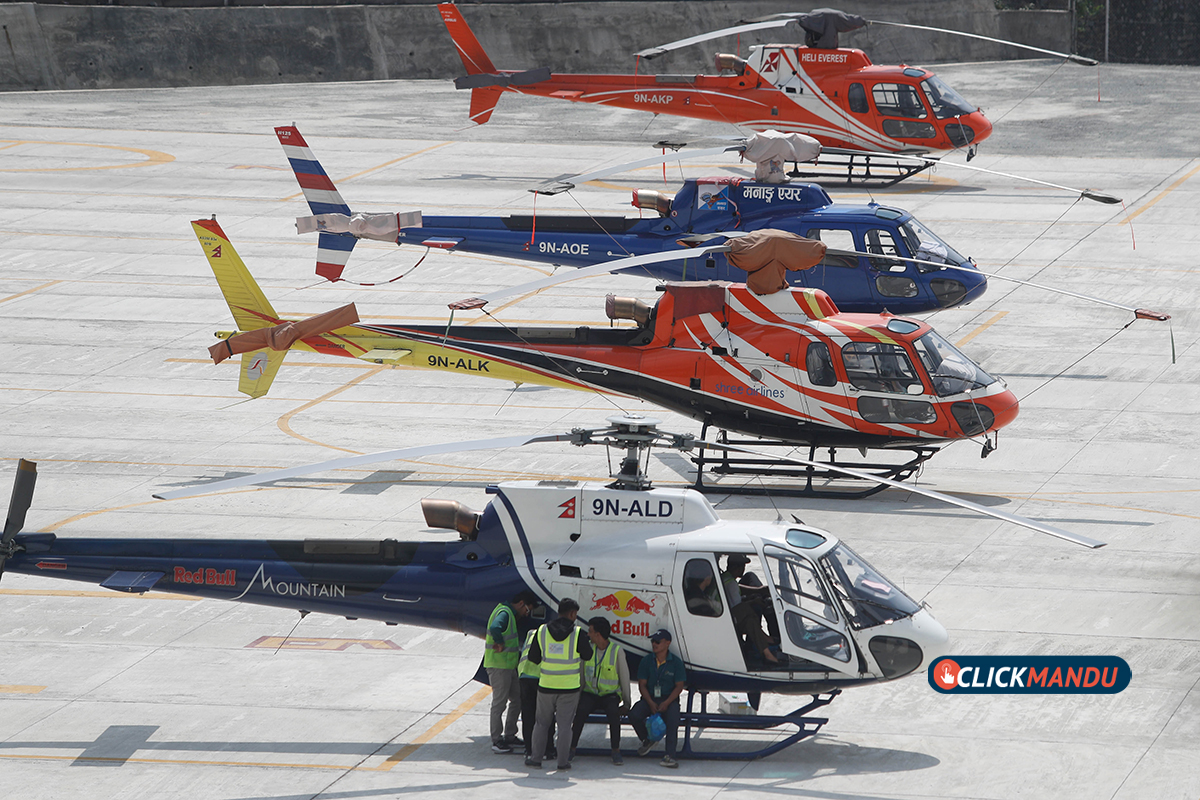Kathmandu: A total of 38 helicopters from 11 companies have been affected by the Gen-Z protests.
Just as the tourist season was about to begin, the protests have triggered a wave of booking cancellations and delayed new reservations.
Yograj Kandel Sharma, General Secretary of the Helicopter Society of Nepal, said that Nepal’s tourism image has failed to create a positive impression recently, leading to a decline in tourist arrivals, which is now impacting the helicopter sector as well.
He said, “Compared to last year, this time would already be peak season and helicopter companies would be extremely busy. But this year, despite the season beginning, most companies’ helicopters are sitting idle.”
Even as October approaches, the tourist season that starts in September remains paralyzed. Already low bookings have further shrunk, with up to 30 percent of confirmed bookings canceled, raising more concerns for business owners, Kandel explained.
Raju Nyaupane, manager of Manang Air, also noted that unlike in previous years, this season lacks enthusiasm. “Helicopter companies can’t bring in clients on their own, and bookings through travel agencies have completely stopped,” he said.
Due to the recent protests and lingering instability, tourists are not showing interest in coming to Nepal, meaning they are not even contacting agencies. As a result, helicopter companies naturally receive no business, he added.
Some helicopter operators believe Nepal’s tourism message has been negatively affected, delaying bookings. They argue that this is the time to push positive messages instead of amplifying negative issues.
One operator said, “Even though the tourist season has begun, late bookings compared to last year can be attributed to the monsoon and the uncertainty of foreign tourists’ plans. We must think positively and promote accordingly.”
Several tourism entrepreneurs emphasized the need to spread the message that Nepal is safe for tourists and that tourism activities remain unaffected. They argue that while some tourism infrastructure was impacted, this should be downplayed to prevent further discouragement of tourists.
Industry players also stress that Nepal’s Civil Aviation Authority (CAAN), the aviation regulator, should facilitate helicopter operations. They say delays arise because operators currently must go to the central office for flight approvals, even for emergency rescues, requiring prior permission and paperwork. They argue that such approvals should be given directly from airports to ease operations.
Helicopter companies have received approval from CAAN to set charter fares according to destinations. A flight to Lukla costs between US$ 2,800 and 3,000.
Fares to Phaplu range from US$ 2,900 to 3,100, while flights to Namche cost US$ 3,000 to 3,100. Trips to Lobuche in the Everest region range from US$ 3,600 to 3,900, and a charter to Everest Base Camp costs US$ 7,300.
At present, a flight to Makalu Base Camp costs US$ 5,000. Charter fares vary by destination but are officially recognized by CAAN.
Currently, Nepali companies own 38 helicopters. According to CAAN records, 24 helicopters are based overnight at Tribhuvan Airport, while another 24 are stationed outside, making a total of 38.
Among these private helicopters: Simrik has 5, Air Dynasty 4, Prabhu 6, Mountain Helicopters 2, Kailash Helicopters 3, Altitude Air 2, and Heli Everest 2. Fishtail Air operates 3, Manang Air 2, Mustang Air 1, and Shree Airlines owns the largest fleet with 8 helicopters.



Comment Here